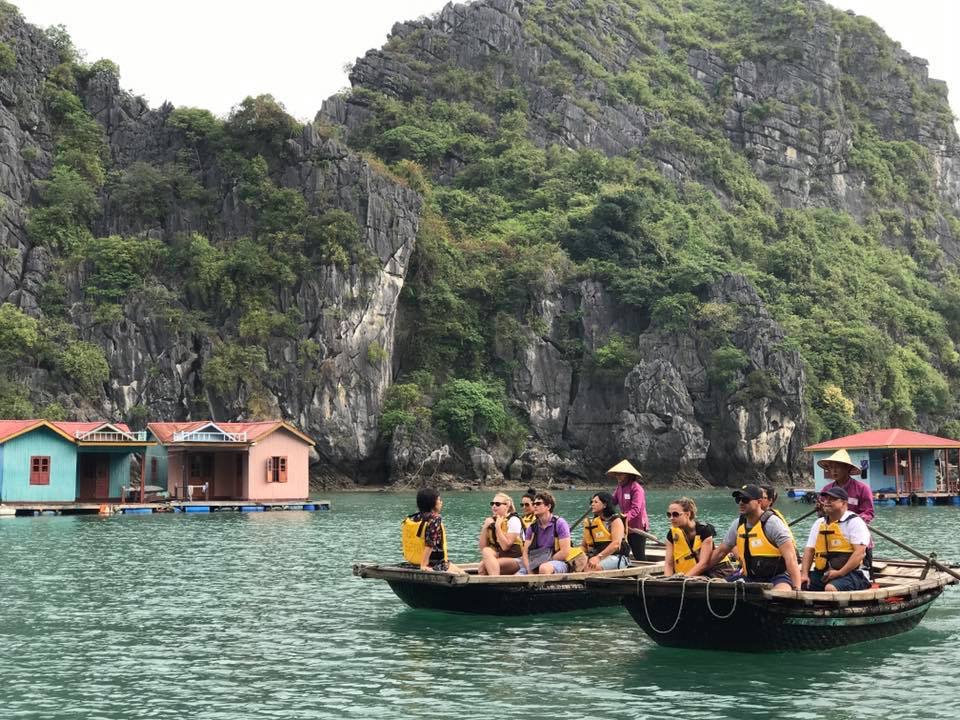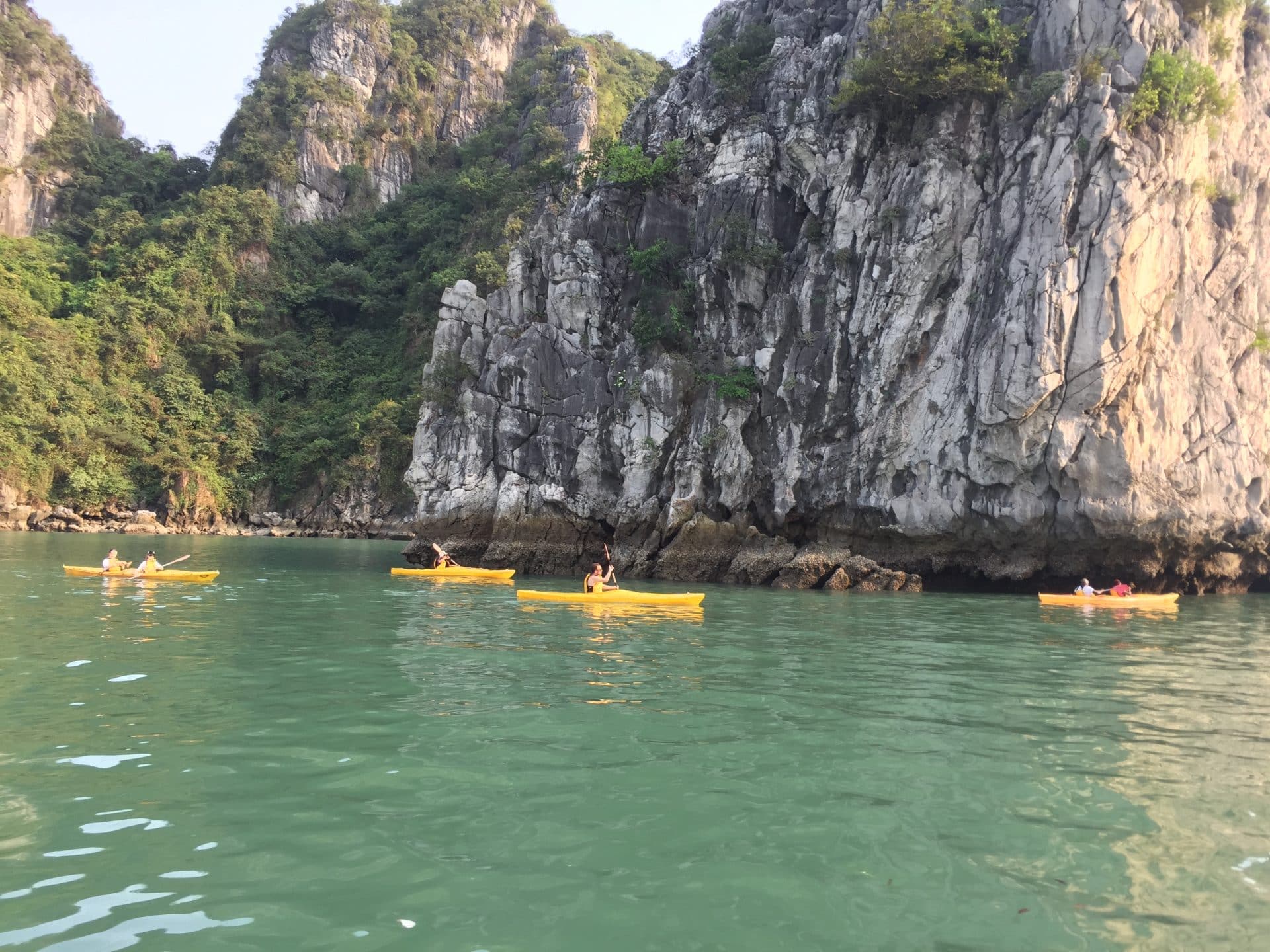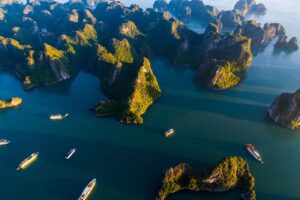Can Vietnam’s Tourism Industry Save the Environment?

Vietnam’s most popular tourist attractions are being degraded. What can tour companies do to help.
By Ai Vuong
Given the recent massive fish die-off in Central Vietnam, environmental issues in the country are under more scrutiny than ever. The extent of the impact on the fishing industry and local people is still unknown as scientists, corporations, and civil society are struggling to give a satisfactory explanation. Although the cause of the coastal calamity remains a mystery, the tourism industry has taken note.
Tourism in Vietnam relies heavily on exotic, alluring natural sites; without these lush landscapes, the industry will be extremely handicapped. Each month, hundreds of thousands of tourists visit the enchanting limestone karsts of Halong Bay, the mesmerizing terraced rice paddies of Sapa, the mystifying caves of Phong Nha, or the jeweled beaches of Phu Quoc.
Unfortunately, the expansive, rapid development of hotels, resorts, and cruises, among other projects trying to accommodate large-scale numbers of visitors, have precipitated monumental environmental effects.
“Tourism as a nature of the business produces a lot of pollution. We bring a large number of tourists to an area, which is sometimes over capacity for that area,” explains Hoang Nguyen, vice director of Handspan Travel Indochina. Hoang speaks passionately about the gravity of the situation, in which the tourism industry can push a natural site beyond its capacity.
A prevalent and well-documented example of human-created pollution in Vietnam is the erosion of Halong Bay. An average of 5,500 tourists each day embark on cruises through the UNESCO World Heritage Site, one of Vietnam’s most popular natural destinations. However, the bay and its surrounding ecosystems have been so polluted that tourists can be seen dutifully picking up trash instead of leisurely swimming in the water.
The environmental consequences certainly affect a tourist’s experience, and customer feedback has sent a red alert to tour agencies. Players in every part of the tourism supply chain feel a responsibility toward protecting the environment.
“According to a survey by Condé Nast Traveler, 93 percent of their readers believe that hospitality companies should play a key role in preserving the area where they operate,” states Noel Cameron, area manager of Minor Hotels, including Anantara Hoi An Resort. “58 percent [of readers] said that their hotel choices are influenced by the actions that the hotels or resorts are doing for the local community.”
With such a strong call to action from customers for responsible travel, Thao Phuong Vo, marketing and communications manager of Paradise Cruises explains, “Today green tourism isn’t just an incentive to protect the environment, it can also be a selling point. There’s something for everybody to win in the part of environmental protection.”
Paradise Cruises, which provides luxury cruises in Halong Bay, has taken steps in environmental conservation by investing in their infrastructure, such as ensuring that their boats have proper waste-water treatment. Anantara Hoi An Resort likewise has a number of initiatives to give back to the community and help preserve the environment.
“Through Anantara’s ‘Dollars For Deeds’ program, hotels match guests’ donations dollar for dollar to raise funds for a range of worthy causes… giving guests the option to donate one dollar per night of their stay,” says Cameron.
Beyond general giving back programs, Paradise Cruises, Handspan Travel, and a number of other tour operators have woven “green tours” into their itineraries. For example, Handspan offers tours that include a trash pick-up activity at a 30 percent price reduction.
These small-scale initiatives, however, only address a small part of the problem. The primary issue is that each of the tour operators, resorts, or companies are operating independently, creating their “green tours” which only work at the end of the supply chain. No one has been able to address the root of the problem.
Travel agencies are concerned by the threatened natural habitats, but at times, their individual actions seem too small in scale.
“What we feel is lacking is that everything needs to be on a larger scale. Everyone has to be doing the same thing… we are just one fleet of a thousand others. You take one step forward, the rest two steps backward,” says Thao.
A few travel agencies have taken the initiative and formed The Responsible Travel Club of Vietnam. The administrative members are Footprint Travel, Indochina Travelland, Sister Tours, Eviva, and Viet Vision Travel. With one of their central philosophy tenets being environmental conservation and protection, the RTC aims to promote responsible tourism across the entire supply chain: from customers to tour operators.
However, these collectives require time and resources that most travel agencies lack. Unless green initiatives are integrated into core company values, it will be difficult for those companies to divert their energy into environmental preservation, particularly during a slow travel season.
In some cases, like with Paradise Cruises, tour companies have the resources, but not the manpower. NGOs have the manpower, but not the resources. In order for tour companies and environmental NGOs to work more effectively, there needs to be more cross-sector collaboration.
The Ha Long Bay Alliance is an example. According to an article in The Diplomat, the International Union for the Conversation of Nature (IUCN) and Marinelife Conservation and Community Development (MCD) is using a “holistic approach” in which the alliance “will work at finding a balance between sustainable economic development and effective environmental protection.”
Whether in the tourism or environmental industry, the urgency for action is immediate. With each passing day, tons upon tons of trash and pollution are eroding Vietnam’s natural habitats and ecosystems. The Vietnam that is seen and enjoyed today by tourists will not be the same if action isn’t taken.
Hoang passionately states, “The negative impact is not quite there but it will be in the future. People are still coming, but people who come say they will never come back. There could be an impact in the near future if we don’t do anything. We need to act right now.”
Unlike the marine devastation in Central Vietnam, the deterioration of the county’s other natural sites is quite straightforward. The tourism industry acknowledges the problems and is calling for collaboration across sectors in order to address the issues. The question remains: who will effectively connect the sectors and ensure that action is taken before it’s too late?







